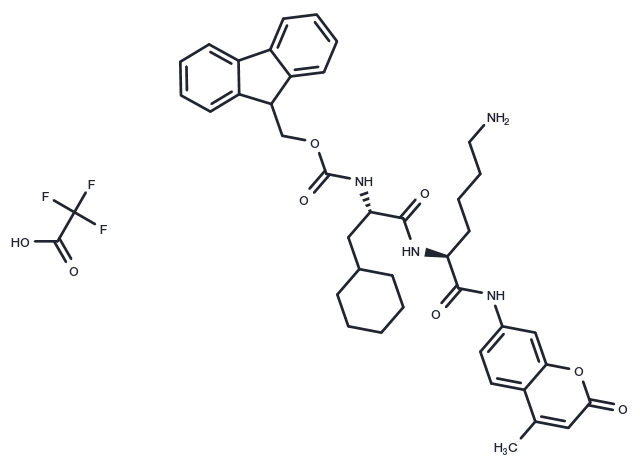Powder: -20°C for 3 years | In solvent: -80°C for 1 year


Galnon is a novel non-peptide galanin receptor agonist (GAL1 and GAL2 with Ki of 11.7 and 34.1 μM respectively).

| Pack Size | Availability | Price/USD | Quantity |
|---|---|---|---|
| 1 mg | In stock | $ 133.00 | |
| 2 mg | In stock | $ 197.00 | |
| 5 mg | In stock | $ 298.00 | |
| 10 mg | In stock | $ 453.00 | |
| 25 mg | In stock | $ 747.00 | |
| 50 mg | In stock | $ 1,050.00 | |
| 100 mg | In stock | $ 1,420.00 | |
| 500 mg | In stock | $ 2,830.00 | |
| 1 mL * 10 mM (in DMSO) | In stock | $ 198.00 |


| Description | Galnon is a novel non-peptide galanin receptor agonist (GAL1 and GAL2 with Ki of 11.7 and 34.1 μM respectively). |
| In vivo | Galnon stimulated insulin release potently in isolated Wistar rat islets; 100 microM of the compound increased the release 8.5 times (p<0.001) at 3.3 mM and 3.7 times (p<0.001) at 16.7 mM glucose. Also in islet perifusions, galnon augmented several-fold both acute and late phases of insulin response to glucose. Furthermore, galnon stimulated insulin release in GK rat islets. These effects were not inhibited by the presence of galanin or the galanin receptor antagonist M35. The stimulatory effects of galnon were partly inhibited by the PKA and PKC inhibitors, H-89 and calphostin C, respectively, at 16.7 but not 3.3 mM glucose. In both Wistar and GK rat islets, insulin release was stimulated by depolarization of 30 mM KCl, and 100 microM galnon further enhanced insulin release 1.5-2 times (p<0.05). Cytosolic calcium levels, determined by fura-2, were increased in parallel with insulin release, and the L-type Ca2+-channel blocker nimodipine suppressed insulin response to glucose and galnon[1].galnon, a GAL receptor agonist, may enhance osteoclastic bone resorption in OVX rats. Although galnon reduced bone volume, biomechanical testing revealed that bone of galnon-treated animals was mechanically superior per unit area. Taken together, galnon simultaneously improves the intrinsic quality of cortical bone whilst stimulating osteoclastic activity in the OVX rat model[2]. |
| Animal Research | OVX rats were treated with either vehicle or galnon for 6 weeks via mini-osmotic pumps. Plasma osteocalcin concentrations, osseous cell gene expression, morphological and biomechanical properties of the skeleton were compared between the two groups[2] |
| Molecular Weight | 792.84 |
| Formula | C42H47F3N4O8 |
Powder: -20°C for 3 years | In solvent: -80°C for 1 year
DMSO: 25 mg/mL (269.28 mM)
You can also refer to dose conversion for different animals. More
bottom
Please see Inhibitor Handling Instructions for more frequently ask questions. Topics include: how to prepare stock solutions, how to store products, and cautions on cell-based assays & animal experiments, etc.
Galnon TFA(475115-35-6(free base)) GPCR/G Protein Neuroscience Neuropeptide Y Receptor GALNON TFA(475115-35-6(free base)) GALNON TFA(475115356(free base)) GALNON TFA(475115 35 6(free base)) inhibitor inhibit
